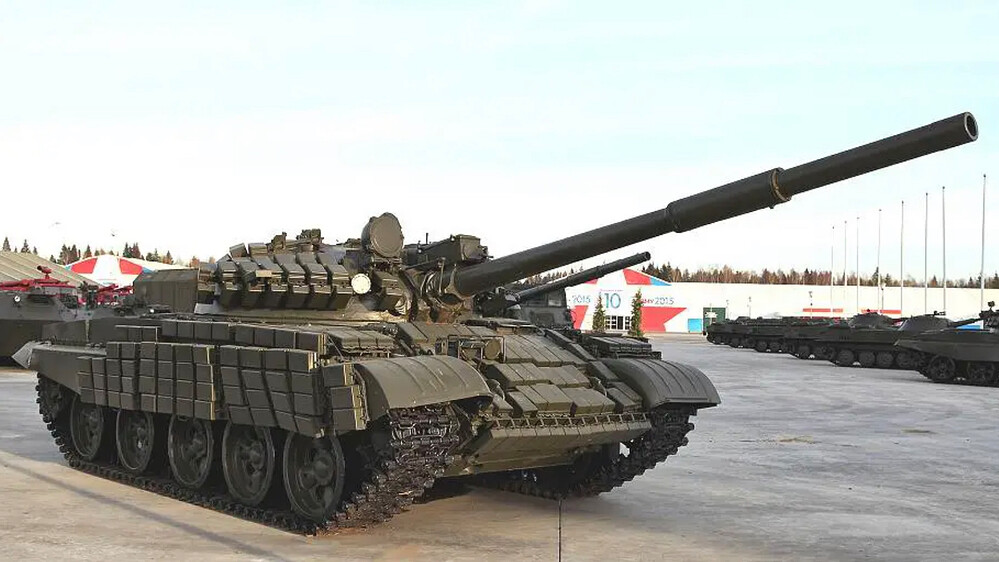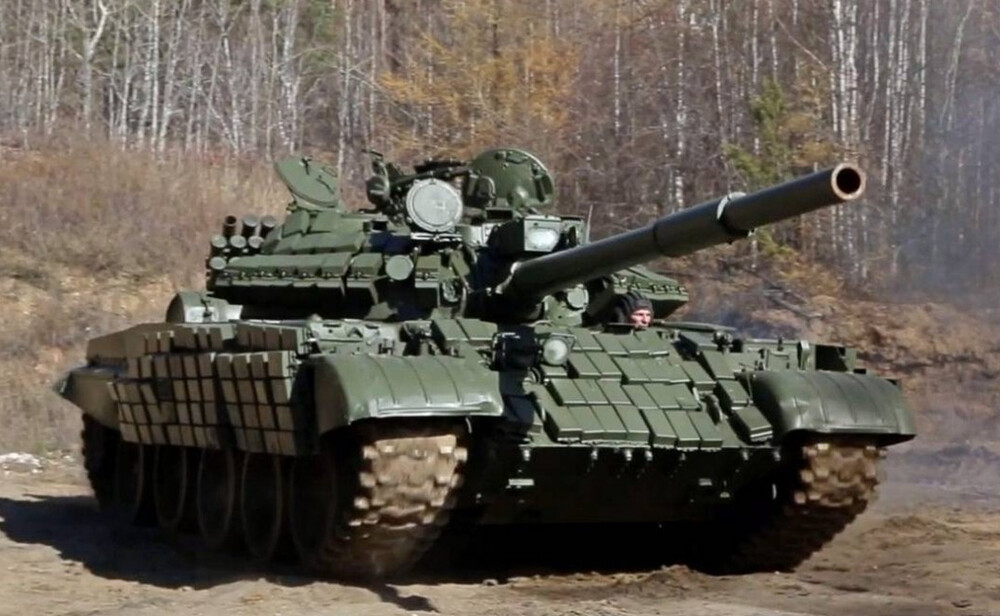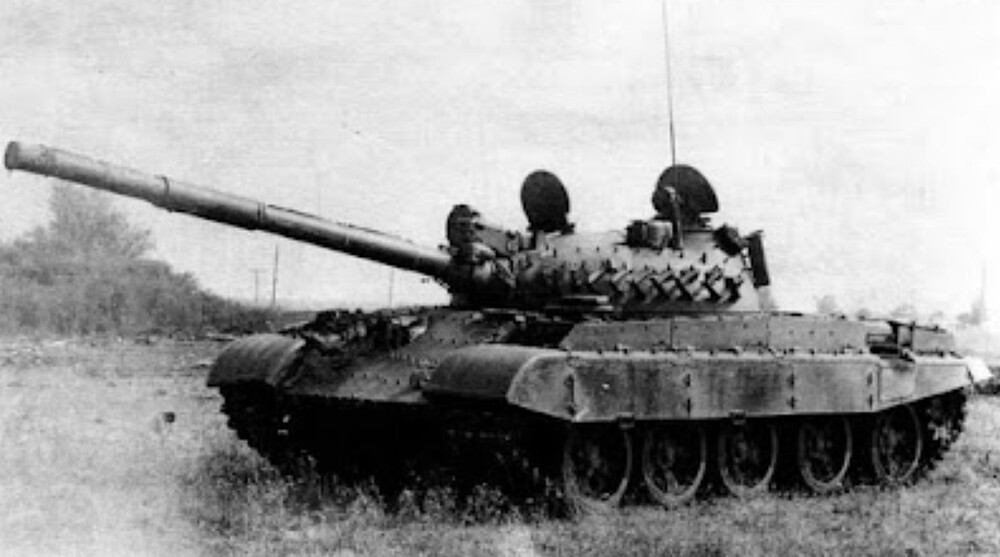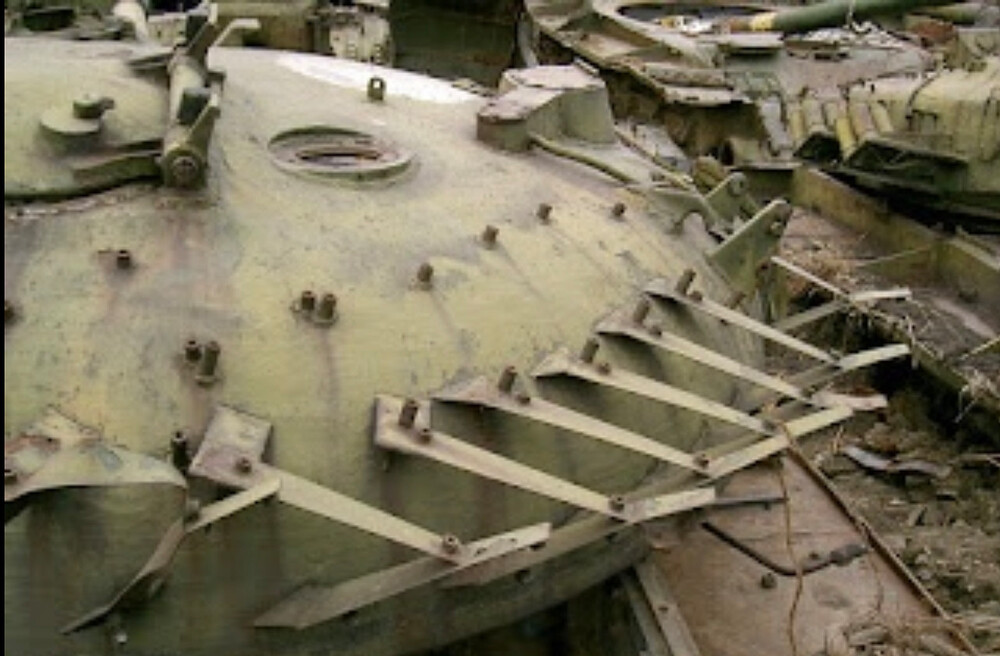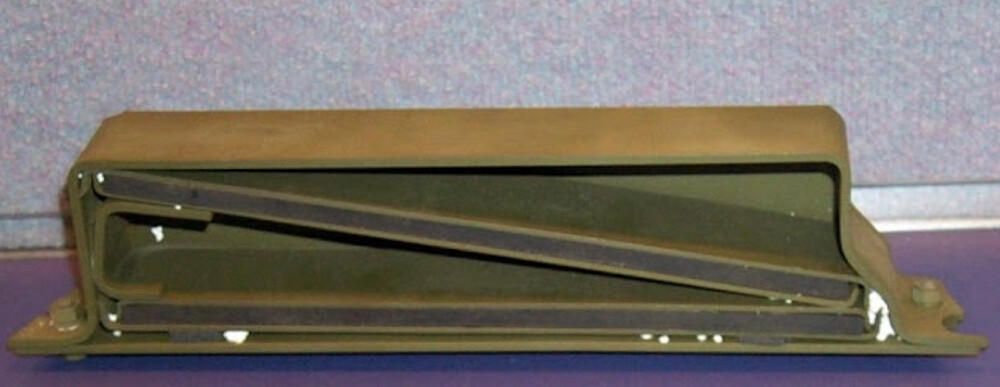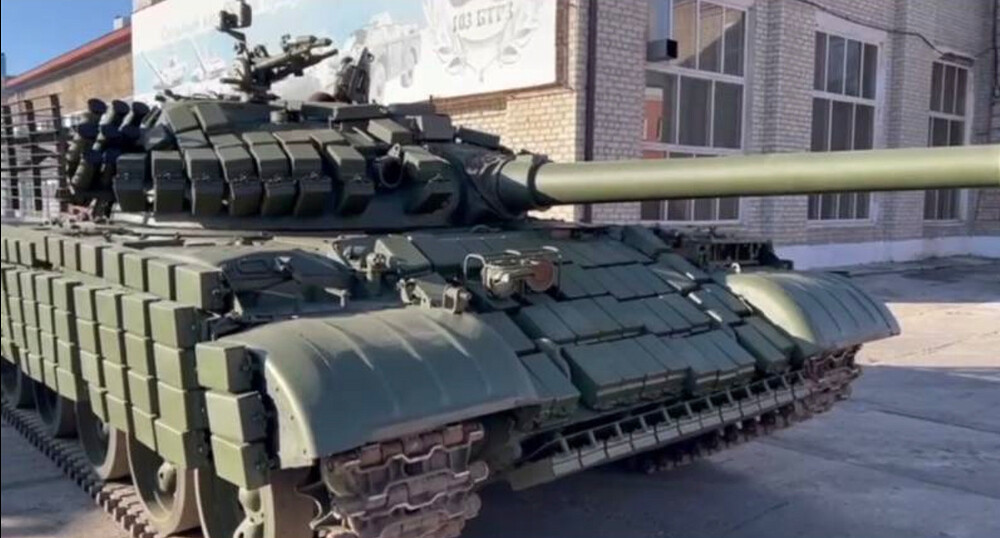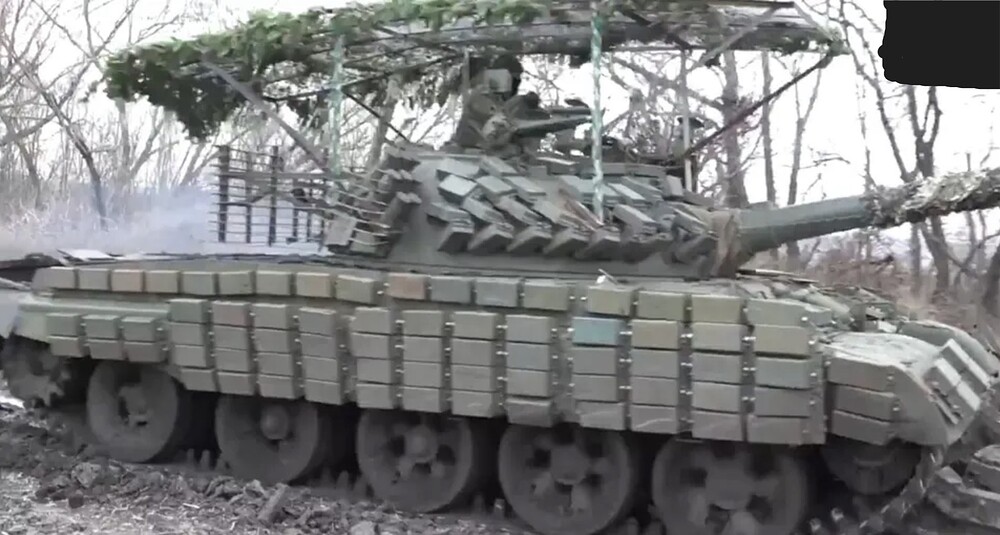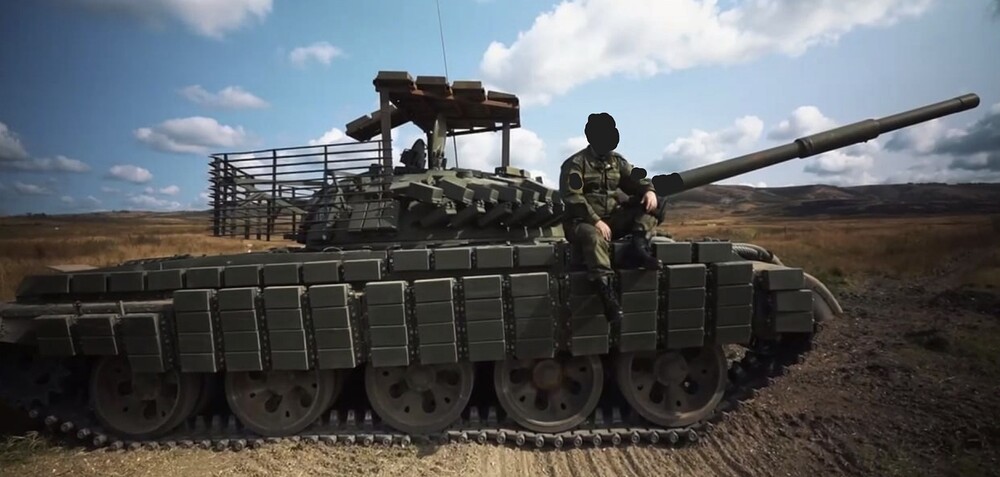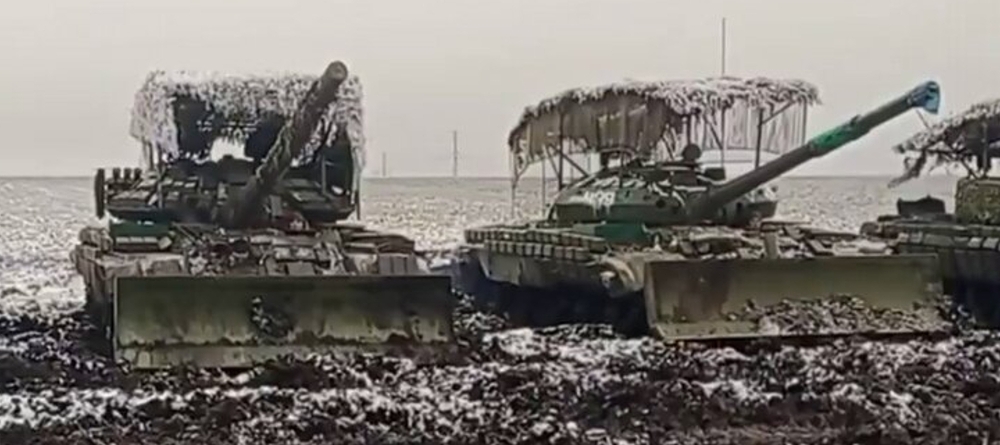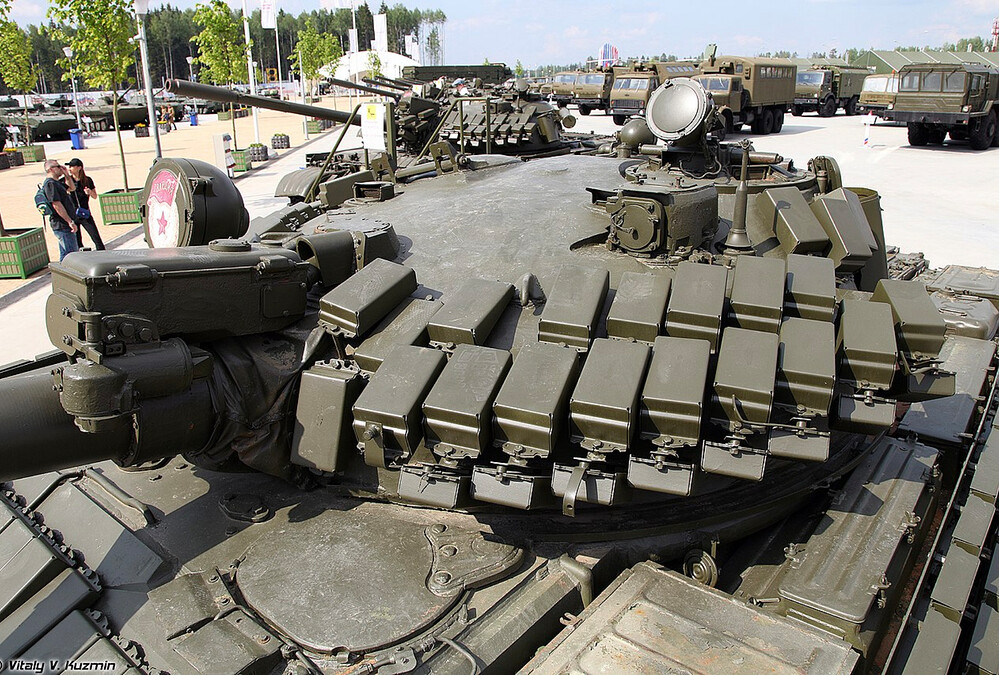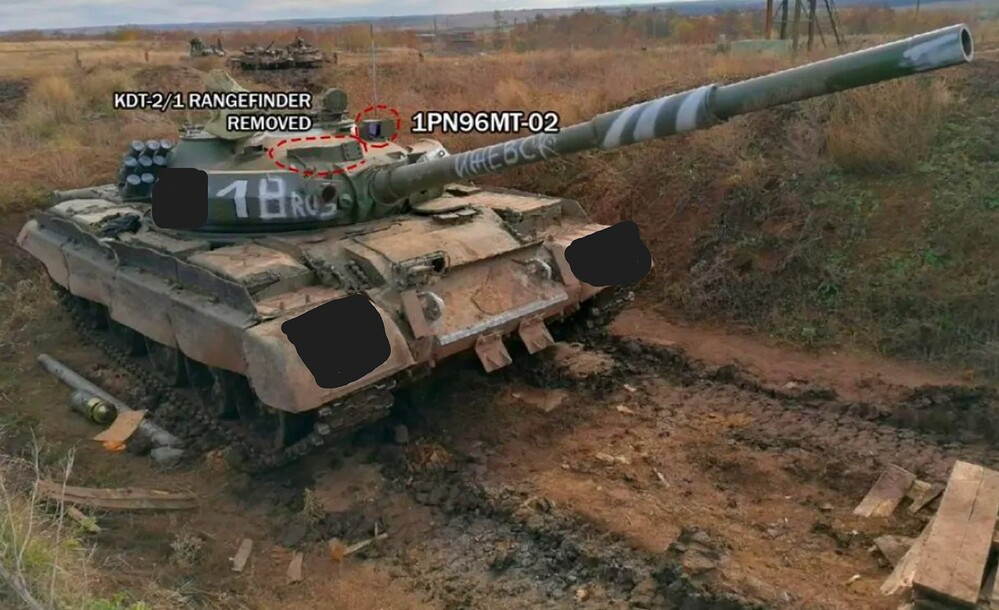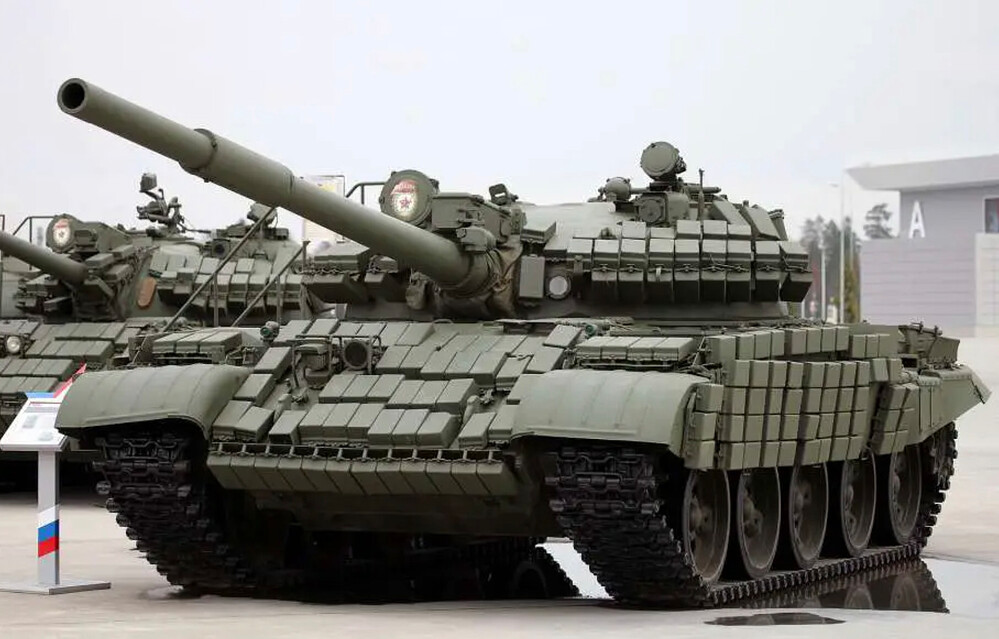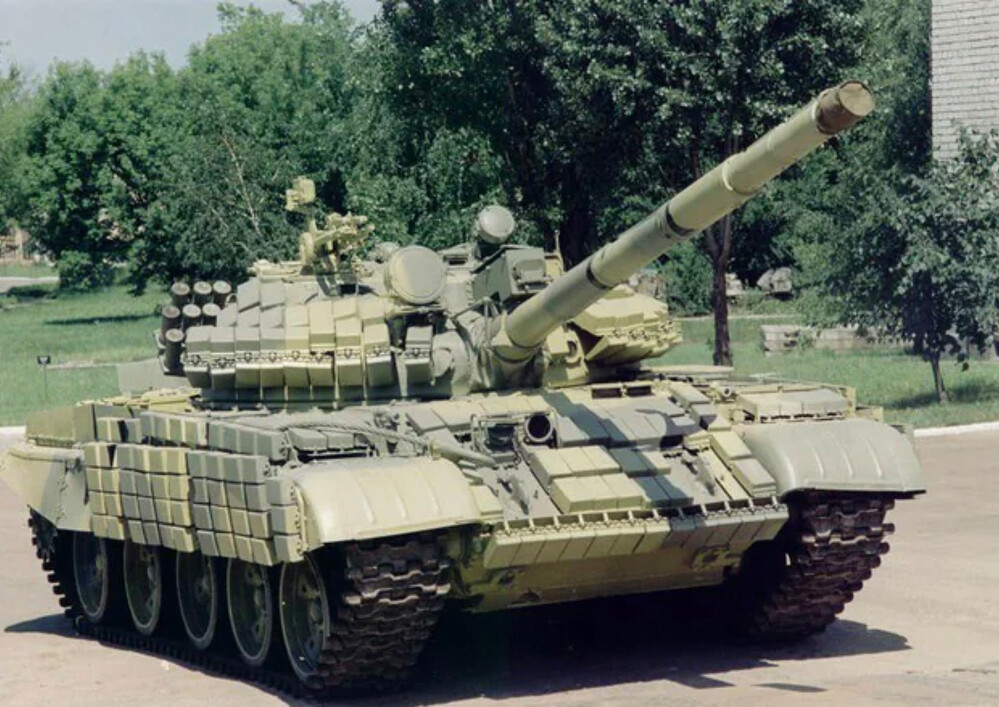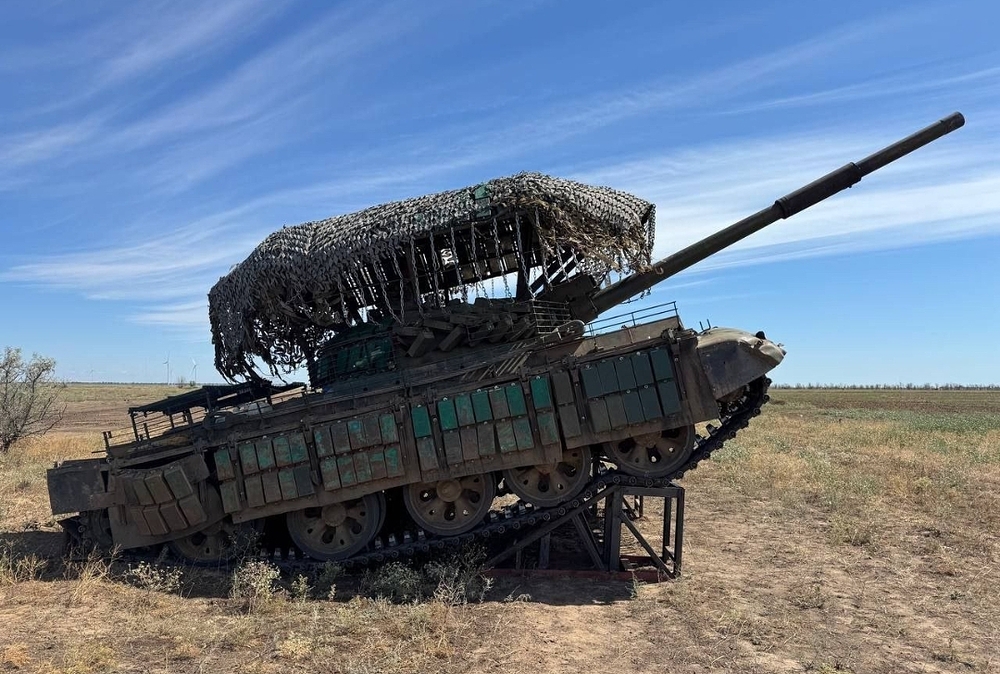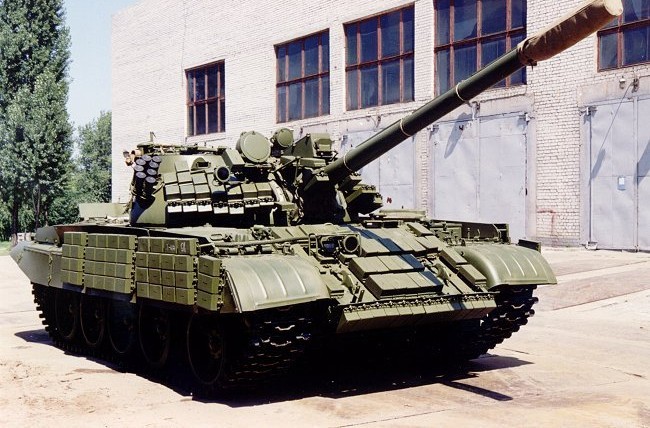Would you like to see T-62MV in-game?
- Yes as a Tech-Tree Vehicle
- Yes as a Premium Vehicle
- Yes as a Squadron Vehicle
- Yes as an Event Vehicle
- No, I don’t want to see T-62MV in-game.
Do you wish to see T-62MV with recent upgrades?
- With Upgrades as Researched (Extra ERA, Slat Armor, Thermal Optic, 690 hp Engine)
- With Upgrades as Standard (Extra ERA, Slat Armor, Thermal Optic, 690 hp Engine)
- Keep It Stock (No Recent Upgrades)
- I said I do not want to see T-62MV in-game
T-62MV
Introduction and Development
The T-62MV is an upgraded variant of the Soviet T-62 main battle tank developed in the mid-1980s. It was introduced as part of a broader modernization effort aimed at enhancing the survivability and effectiveness of older tank models without incurring the cost of producing entirely new vehicles. The upgrade was a direct response to operational challenges, especially those encountered in Afghanistan, and reflected a growing emphasis on protecting tanks from increasingly common anti-tank weapons such as rocket-propelled grenades and guided missiles. The “V” designation refers specifically to the addition of Kontak-1 explosive reactive armor (ERA) blocks, distinguishing it from the T-62M, which used composite armor protection instead.
History
Spoiler
The T-62 was introduced in the early 1960s as the Soviet Union’s first main battle tank to feature a smoothbore gun, the 115 mm U-5TS, marking a shift in Soviet tank design philosophy toward higher-velocity, armor-piercing firepower. It was intended to supplement and eventually replace the T-55 and T-54 series, offering better performance against Western tanks that were rapidly evolving in armor and firepower. The T-62’s gun gave it a decisive advantage in long-range engagement capability over earlier Soviet tanks, and it came with a new turret design and a slightly lengthened hull. However, while it introduced key improvements in firepower, it retained many of the T-55’s mechanical features and retained its mobility and armor protection.
As the decades progressed and anti-tank threats became more sophisticated, particularly with the widespread use of HEAT warheads and APFSDS rounds, the base T-62 began to struggle in modern combat scenarios. This led to a series of upgrades, most notably the T-62M and T-62MV, aimed at extending the tank’s operational life through improved protection, fire control, and mobility.
The T-62M, developed in the early 1980s, introduced composite applique armor to the hull and turret. This included additional composite layers mounted on the turret front and glacis plate, called the “Brezhnev’s Eyebrows.” This passive armor enhancement increased survivability against older HEAT and kinetic threats, bringing frontal protection levels up to approximately 300–350 mm RHAe against APFSDS and around 400–450 mm against HEAT, depending on the angle and impact location.
The T-62MV was a parallel upgrade path that replaced the passive composite armor with Kontakt-1 explosive reactive armor mounted on the turret, glacis, and hull sides. This ERA greatly improved protection against single-charge HEAT warheads, offering up to 600 mm RHAe of effective armor in areas covered by the ERA blocks. However, like other vehicles equipped with Kontakt-1, it provided little to no additional protection against kinetic penetrators like APFSDS. In this way, the T-62MV was better suited for environments where shaped-charge threats (such as RPGs and ATGMs) were more common, while the T-62M had marginally better resistance to armor-piercing rounds.
Both the T-62M and T-62MV received significant fire control upgrades, including the installation of a KTD-2 or KTD-1 laser rangefinder mounted above the gun barrel and the Volna fire control system, which improved first-shot hit probability over the older optical-only setups. The gunner was provided with updated sights, and in some variants, the tank was capable of firing the 9K116-1 “Sheksna” laser-guided ATGM, increasing its effective engagement range to over 4 kilometers.
To compensate for the added weight from armor and systems, both versions were fitted with an improved V-55U diesel engine, rated at 620 horsepower, a modest increase over the original 580 hp unit. This helped maintain reasonable mobility and power-to-weight ratio, though off-road performance was still limited compared to newer tank designs. Additional modifications included new radios, an automatic fire suppression system, and updated NBC protection.
Armor and Protection
Spoiler
One of the most noticeable features of the T-62MV is its use of Kontakt-1 explosive reactive armor. Unlike the T-62M, which relies on heavy composite armor blocks bolted to the turret and glacis, the T-62MV is covered with an array of rectangular ERA bricks. These blocks are mounted on key frontal and side areas, including the turret cheeks, upper glacis, and side skirts. When struck by a shaped-charge warhead, the ERA reacts by detonating an explosive layer that disrupts the penetrative jet, significantly reducing its effectiveness.
The shift from passive composite armor to reactive armor had a notable impact on vehicle weight. The original T-62 had a combat weight of around 37.5 tons, offering only basic steel armor protection. The T-62M, with its large composite armor blocks, increased that significantly to approximately 42 tons. In contrast, the T-62MV, despite its external explosive reactive armor (ERA), weighed in at around 38.5 tons. This weight reduction was achieved by replacing the heavy composite modules with much lighter Kontakt-1 ERA bricks. While this gave the T-62MV excellent protection against HEAT threats, it came at the cost of reduced effectiveness against kinetic energy penetrators like APFSDS, since it lacked the thick passive armor layers of the T-62M.
Armor and Protection Upgrades
Spoiler
If Gaijin wishes to enhance the T-62MV’s survivability, they could consider adding optional slat armor and extended ERA coverage to more closely reflect modifications seen throughout its service life. In more recent conflicts, Russian factory modernization efforts have expanded the application of Kontakt-1 ERA to previously unprotected areas, such as the turret rear/sides, turret roof, and side skirts of the engine compartment. In addition, these factory modernizations included the installation of slat armor to protect the rear of the turret, along with newly added Kontakt-1 ERA for the same area. However, based on available images, the hull flanks appear to have been fitted with slat armor only, and not consistently. Including these upgraded features could provide a realistic and historically grounded way to improve T-62MV in War Thunder.
The factory T-62MV protection upgrade can be summarized as follows:
- Additional ERA on the rubber side skirts (engine sides)
- Additional ERA on the turret rear and roof
- Slat armor on the turret sides/rear and hull rear
Important: Any other modifications, including ‘cope cages’ and additional protection measures, are non-factory field modifications!
Dozer Blade
Spoiler
Some modern T-62MVs have been observed with dozer blades, which can significantly enhance frontal hull protection against shaped-charge munitions. Mounting the blade and its mechanisms, however, may require sacrificing several ERA blocks on the upper glacis. That said, dozer blades are not new to the T-62 series and were already seen on T-62Ms during the Soviet–Afghan War.
Fire Control System
Spoiler
The T-62MV inherited the upgraded fire control system first introduced in the T-62M. It included a laser rangefinder mounted above the main gun, significantly improving range acquisition over older optical range finding methods. The gunner was equipped with a revised day sight and an analog ballistic computer, allowing for more accurate first-round hits by factoring in various shooting conditions. A dual-axis gun stabilizer improved the tank’s ability to engage targets while moving. For nighttime operations, the T-62MV featured a new night sight that combined passive and active infrared modes. Additionally, it was compatible with a laser-guided missile system, allowing the tank to fire anti-tank guided missiles through the main gun barrel. This expanded its effective engagement range and gave it a new level of versatility not present in the original T-62 configuration. Smoke grenade launchers were also added to enhance battlefield survivability.
Fire Control System Upgrades
Spoiler
Recent upgrades to Russia’s T-62M tanks have included the installation of the 1PN96MT-02 thermal imaging sight, which replaces the older 1K13 system. While this new optic provides basic thermal imaging and an integrated laser rangefinder, it is considered limited in quality, offering only modest resolution and image clarity compared to more modern systems. Additionally, the 1PN96MT-02 lacks the capability to guide gun-launched anti-tank guided missiles (ATGMs), effectively removing the ATGM functionality that the T-62M once possessed. The original KTD-2 laser rangefinder housing, which was previously mounted above the gun barrel, was removed. In its place, on the turret where the rangefinder once connected, a single Kontakt-1 ERA block has been installed.
Engine and Mobility
Spoiler
To accommodate the added systems and maintain mobility, the T-62MV used an upgraded version of the original T-62 engine. The standard powerplant was a 580 hp diesel engine, but the modernized variant typically received a 620 hp engine. This improvement allowed the tank to maintain mobility despite its increased weight. The T-62MV retained the five-roadwheel torsion bar suspension and manual transmission of earlier models. It achieved speeds of around 50 km/h on roads and maintained good off-road performance. Some recently upgraded units are reportedly equipped with a more powerful engine rated at around 690 hp. This upgrade may have further improved top speed, acceleration, and responsiveness, though the exact performance with the new engine remains unknown.
Conclusion and Implementation
Spoiler
One of the defining aspects of the T-62MV was its balance between protection and weight. By replacing the T-62M1’s heavy composite armor with reactive armor, the T-62MV achieved superior protection against HEAT threats without the same weight penalty. While both configurations offered improved survivability over the baseline T-62, they prioritized different protection philosophies. The T-62M1 was better at resisting kinetic energy rounds due to its thicker armor, while the T-62MV excelled in defending against shaped charges and explosive threats. In summary, the T-62MV represented a cost-effective and technically sound upgrade to the T-62 platform, focusing on combatting hostiles equipped with light anti-tank threats. Its use of reactive armor, updated fire control systems, and modest engine improvements allowed it to remain viable in modern conflict environments while preserving much of the mechanical simplicity and reliability that characterized Soviet tank design.
In my opinion, the tank should receive the additional upgrades discussed in this suggestion, as without them it would effectively be a copy-paste T-62M1 with inferior protection from a gameplay perspective. Implementing these enhancements, such as expanded ERA coverage, slat armor, and modernized optics, would help distinguish it from the standard T-62M1 and make it a more compelling addition to the game. This would not only improve its War Thunder performance but also provide greater incentive for players to grind or purchase the vehicle, regardless of how it is ultimately introduced. Of course, the final decision rests with Gaijin.
T-62MV Stock – Specifications
Spoiler
Crew: 4 (Commander, Gunner, Loader, Driver)
Combat Weight: ~38.5 tons
Length (gun forward): 9.34 m
Width: 3.30 m
Height: 2.40 m
Ground Clearance: 0.43 m
Armament
- Main Gun: 115mm U-5TS (2A20) smoothbore gun
- Ammunition Types: APFSDS, HEAT, HE, ATGM (9M117 “Sheksna”)
- Ammo Load: ~40 rounds
- Secondary Armament:
- 7.62mm PKT coaxial machine gun
- 12.7mm DShK anti-aircraft machine gun
Fire Control System
- Laser Rangefinder: KTD-2
- Ballistic Computer: Analog (BV-62)
- Gunner Sight: TShSM-41U day sight
- Night Sight: 1K13-2 passive/active IR with ATGM guidance capability
- Gun Stabilizer: 2E42 (two-axis stabilization)
Armor and Protection
- Base Armor (Glacis): ~100 mm @ 60° (~200 mm RHAe)
- Turret Armor: ~210 mm (cast steel)
- ERA: Kontakt-1 explosive reactive armor (turret, glacis, side skirts)
- Smoke Grenade Launchers: 8-barrel 81mm system
- Underbelly Mine Plate: Reinforced for anti-mine protection
- Side Skirts: Rubberized, with additional ERA blocks (on some variants)
Mobility
- Engine:
- Standard: V-55U diesel, 620 hp
- Some variants: V-46-5M diesel, 690 hp
- Power-to-Weight Ratio:
- ~16.1 hp/ton (V-55U)
- ~17.9 hp/ton (V-46-5M)
- Top Speed: 50 km/h (road)
- Operational Range: ~450 km (internal fuel), ~650 km with external drums
- Transmission: Manual, 5 forward / 1 reverse
- Suspension: Torsion bar with reinforced dampers
- Ground Pressure: ~0.80 kg/cm²
Sources
Spoiler
T-62MV: the same "grandfather", but with dynamic protection
Tankograd: T-62
Comprehensive Soviet/Russian vehicle collection
Tankograd: Kontakt-1
